Broadway Melody of 1940

Brief Synopsis
Cast & Crew
Norman Taurog
Fred Astaire
Eleanor Powell
George Murphy
Frank Morgan
Ian Hunter
Film Details
Technical Specs

Synopsis
The struggling dance team of Johnny Brett and King Shaw is split up when, in a case of mistaken identity, theatrical agent Bert C. Matthews offers King rather than Johnny the job of leading man in Broadway star Clare Bennett's new show. Success goes to King's head, but Johnny loyally sticks by his friend, even coaching him with his dance steps. King grows so egotistical that he begins to neglect practice and becomes convinced that Clare is in love with him. Meanwhile, Clare comes to realize that Johnny is the real talent behind King and finds herself falling in love with him. When, on opening night, King has a spat with Johnny and gets so drunk that he is unable to perform, Johnny goes on in his place and saves the show. Once he sobers up, King realizes that he has acted the fool and rectifies the situation by abdicating to Johnny both Clare and his role.

Director

Norman Taurog
Cast

Fred Astaire

Eleanor Powell

George Murphy
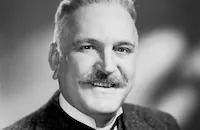
Frank Morgan
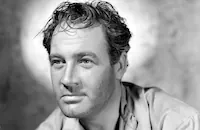
Ian Hunter
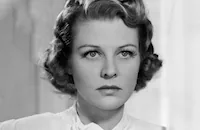
Florence Rice

Lynne Carver

Ann Morriss
Trixie Frischke

Douglas Mcphail
Hal K. Dawson
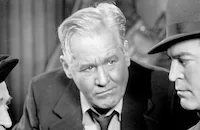
Joseph Crehan
Harry Lash
Johnny Day
Don Brodie
Mel Blanc
Gladys Blake
George Chandler
Walter Soderling
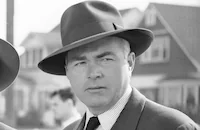
James Flavin
Chic Collins
Jack Mulhall
Libby Taylor
Hal Leseur
Barbara Jo Allen
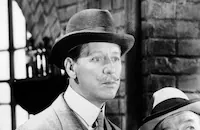
Irving Bacon
Alphonse Martell
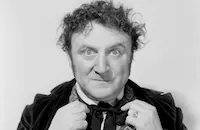
Herman Bing
David Lloyd
Edgar Dearing

E. Alyn Warren
Mel Ruick
Mary Field
Blair Woolstencroft
Arthur Stuart Hull

Joe Yule
John T. Murray
Gertrude Simpson
Paul E. Burns
Jean Del Val
Lois Hodnett
The Music Maids
William Tannen
Crew
Adrian
Leo Arnaud
Bobby Connolly
Jack Cummings
John S. Detlie
Roger Edens
Roger Edens
Cedric Gibbons
Leon Gordon
James Harper
Charles Henderson
Gilbert Kurland
Oliver T. Marsh
Jack Mcgowan
Alfred Newman
George Oppenheimer
Cole Porter
Edward Powell
Merrill Pye
Walter Ruick
Joseph Ruttenberg
Bill Ryan
Dore Schary
Blanche Sewell
Douglas Shearer
Art Smith
Valles
Edwin B. Willis

Photo Collections
Videos
Movie Clip



Trailer
Hosted Intro
Film Details
Technical Specs

Articles
Broadway Melody of 1940
The glittering cinematography reaches its peak in a climactic, three-part production number built around Porter's "Begin the Beguine" that includes a female chorus, a jazz orchestra and an elaborate mirrored set with a glass floor that had to be kept at temperatures near freezing to guard it from cracking under the lights. The number's justly celebrated final passage, a competitive tap duet by Astaire and Powell, forms a highlight of That's Entertainment! (1974). Film historian David Thomson, in his Biographical Dictionary of Film, writes that he would choose this segment if he could have only one film clip to watch while sentenced forever to solitary confinement: "Black and white and a hard, reflective floor, a set that recedes into darkness. Fred in all white with a black bowtie. Eleanor Powell wears three-quarter heels and a dress that stops just below the knees.... I know of nothing as exhilarating or unfailingly cheerful, and maybe the loveliest moment in films is the last second or so, as the dancers finish, and Powell's alive frock has another half-turn, like a spirit embracing the person."
Broadway Melody of 1940 was important to Astaire because it marked his first starring role at MGM after his RKO successes with Ginger Rogers. Much publicity attended his filming with a new partner, and some fans resented his being "unfaithful" to Rogers. He and Powell, a bit awed by each other's ability, found themselves being almost too polite as they began working together. For weeks they addressed each other as "Mr. Astaire" and "Miss Powell." Afraid of seeming pushy, each held back and waited for the other to take the lead. Powell recalled finally saying to Astaire, "Look, we can't go on like this. I'm Ellie; you're Fred. We're just two hoofers." After that, the two perfectionists worked together smoothly - and so diligently that they exhausted their rehearsal pianist!
The plot of Broadway Melody of 1940, despite a plethora of screenwriters, is a simple one. Astaire and George Murphy play dancing partners who are separated when Murphy - in a mixup involving their names - is chosen instead of Astaire to star in a Broadway musical opposite Powell. When Murphy gets drunk on opening night, the self-effacing Astaire steps in, wearing a mask, to save the day. Later, of course, he gets his own chance to dance his way into the heart of his leading lady, not to mention the audience. Other songs in the Porter score include "I've Got My Eyes on You," "I Am the Captain," "Please Don't Monkey with Broadway," "Between You and Me" and "I Concentrate on You." Despite the celebrity of "Begin the Beguine," Powell chose another duet with Astaire, the "Jukebox Dance," as her favorite routine in films.
Producer: Jack Cummings
Director: Norman Taurog
Screenplay: Walter DeLeon, Leon Gordon, Vincent Lawrence, Albert Mannheimer, Eddie Morna, George Oppenheimer, Thomas Phipps, Sid Silvers, Preston Sturges, from story by Jack McGowan and Dore Schary
Art Direction: John S. Detlie, Cedric Gibbons
Cinematography: Joseph Ruttenberg, Oliver T. Marsh
Costume Design: Adrian, Valles
Editing: Blanche Sewell
Original Music: Cole Porter, Roger Edens (additional music), Walter Ruick (additional music) Principal Cast: Fred Astaire (Johnny Brett), Eleanor Powell (Clare Bennett), George Murphy (King Shaw), Frank Morgan (Bob Casey), Ian Hunter (Bert C. Matthews), Florence Rice (Amy Blake).
BW-102m. Closed captioning.
by Roger Fristoe

Broadway Melody of 1940
Quotes
Trivia
Planned to be shot in Technicolor, but made in black and white.
The fur coat running gag was based on the real-life ploy of talent agent Doc Shurr.
The vocals for Carmen D'Antonio were dubbed by Lois Hodnett.
The screenplay was based on a story by Jack McGowan and Dore Schary. Schary would go on to become head of MGM in the 1950s.
Notes
This was Fred Astaire's first picture for M-G-M since the 1933 film Dancing Lady, and it was the first picture Astaire made following his departure from RKO. It was also the fourth and last of M-G-M's "Broadway Melody" pictures. For additional information about the films, see entries above for Broadway Melody of 1936 and Broadway Melody of 1938. According to modern sources, the film was originally to have been shot in Technicolor, but because of the unsettled economic conditions caused by the start of the war in Europe, M-G-M decided to film it in black and white. Modern sources add that the set for the "Begin the Beguine" number cost $120,000 to construct and used a sixty foot multi-paneled mirror mounted on a revolving track that swung around to change backgrounds during the dance. Cole Porter wrote the song in 1935, and it was one of his biggest hits.

















